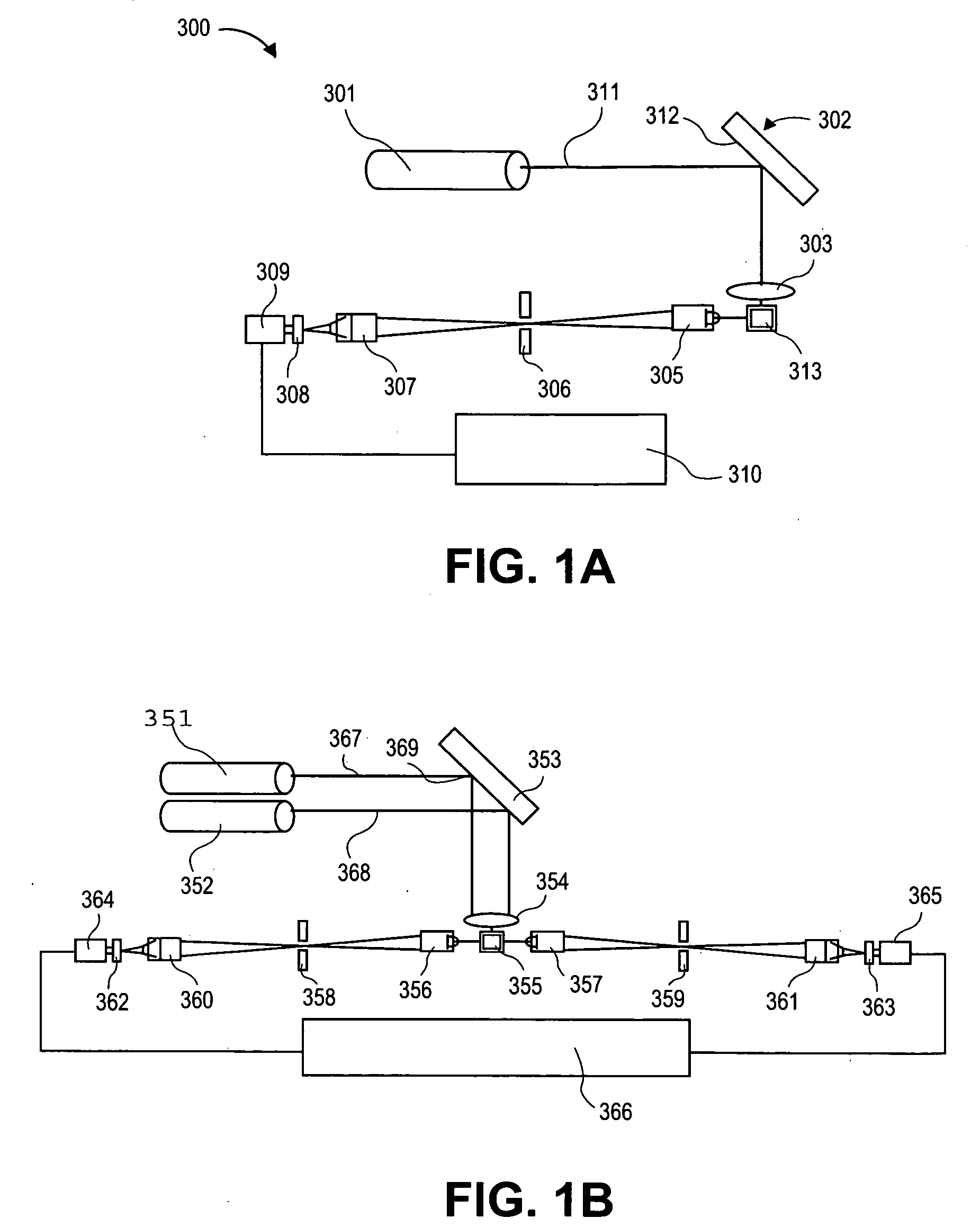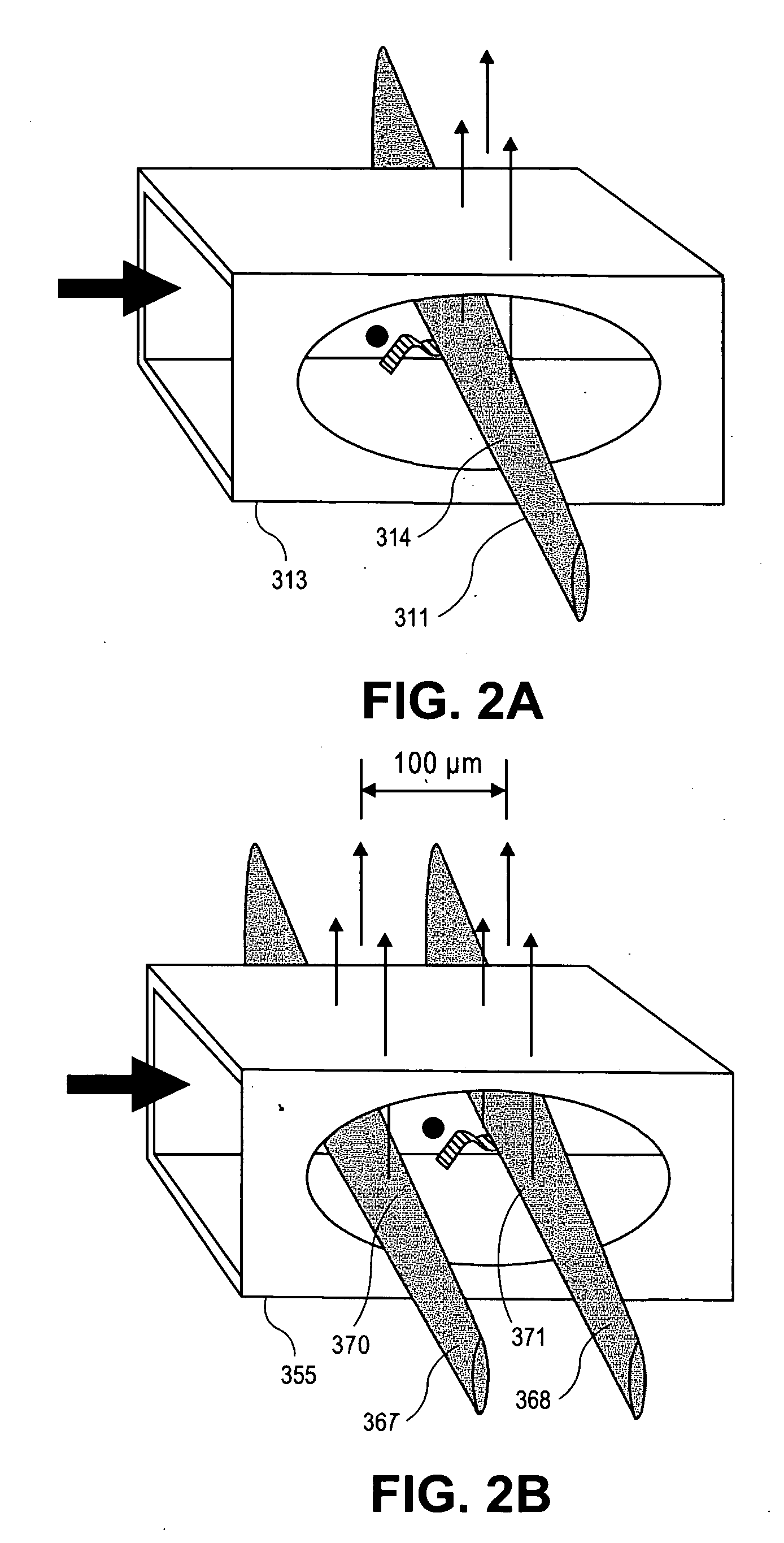Highly sensitive system and methods for analysis of prostate specific antigen (PSA)
a prostate specific antigen and sensitive technology, applied in the field of high-sensitivity system and methods for analysis of prostate specific antigen (psa), can solve the problems that chemotherapy has not been successful in the past, and achieve the effect of high numerical apertur
- Summary
- Abstract
- Description
- Claims
- Application Information
AI Technical Summary
Benefits of technology
Problems solved by technology
Method used
Image
Examples
example 1
Comparison of PSA Assay Platforms
[0257]Assay: The purpose of this assay was to compare the sensitivity and reliability of the PSA assay system.
[0258]Materials: the following materials were used in the procedure described below: Assay plate: Nunc Maxisorp, product 464718, 384 well, clear, passively coated with a monoclonal antibody, BiosPacific #8311 (1 mg / ml in citrate-phosphate-NaC buffer pH 6.0, with 0.1% sodium azide as a preservative, stored at +2 to +8° C. For the standard curve, human PSA antigen (BioSpecific #J63000190) was used. The diluent for the standard concentrations was human serum. The standard was diluted to 10 ug / ml, aliquoted and frozen to −80° C. Dilution of the standards was done in a 96 well, conical, polypropylene, (Nunc product #249944). The following buffers and solutions were used: (a) assay buffer: BBS with 1% BSA and 0.1% Triton X-100; (b) detection antibody (Ab): goat polyclonal antibody affinity purified (BioSpecific G126C), which was labeled with fluore...
example 2
Sandwich Assays for Biomarkers: Total PSA
[0264]Assay: The purpose of this assay was to detect the presence of total PSA in human serum. The assay format was a two-step sandwich immunoassay based on human PSA antigen and an affinity purified goat polyclonal detection antibody. Ten microliters of sample were required. The working range of the assay is 0-100 pg / ml with a typical analytical limit of detection of 0.1-3 pg / ml. The assay required about four hours of bench time to complete.
[0265]Materials: the following materials were used in the procedure described below: Assay plate: Nunc Maxisorp, product 464718, 384 well, clear, passively coated with a monoclonal antibody, BiosPacific #8311 (1 mg / ml in citrate-phosphate-NaC buffer pH 6.0, with 0.1% sodium azide as a preservative, stored at +2 to +8° C. For the standard curve, human PSA antigen (BioSpecific #J63000190) was used. The diluent for the standard concentrations was human serum. The standard was diluted to 10 ug / ml, aliquoted a...
example 3
Sandwich Bead-Based Assays for Total PSA
[0276]Assay: The assays described above use the same microtiter plate format where the plastic surface is used to immobilize target molecules. The single particle analyzer system also is compatible with assays done in solution using microparticles or beads to achieve separation of bound from unbound entities.
[0277]Materials: MyOne Streptavidin C1 microparticles (MPs) are obtained from Dynal (650.01-03, 10 mg / ml stock). Buffers used in the assay include: 10× borate buffer saline Triton Buffer (BBST) (1.0 M borate, 15.0 M sodium chloride, 10% Triton X-100, pH 8.3); assay buffer (2 mg / ml normal goat IgG, 2 mg / ml normal mouse IgG, and 0.2 mg / ml MAB-33-IgG-Polymer in 0.1 M Tris (pH 8.1), 0.025 M EDTA, 0.15 M NaCl, 0.1% BSA, 0.1% Triton X-100, and 0.1% NaN3, stored at 4C); sand elution buffer (BBS with 4 M urea, 0.02% Triton X-100, and 0.001% BSA, stored at 2-8C). Antibodies used in the sandwich bead-based assay include: Bio-Ab (A34650228P (BiosPaci...
PUM
| Property | Measurement | Unit |
|---|---|---|
| concentration | aaaaa | aaaaa |
| concentration | aaaaa | aaaaa |
| diameter | aaaaa | aaaaa |
Abstract
Description
Claims
Application Information
 Login to View More
Login to View More - R&D
- Intellectual Property
- Life Sciences
- Materials
- Tech Scout
- Unparalleled Data Quality
- Higher Quality Content
- 60% Fewer Hallucinations
Browse by: Latest US Patents, China's latest patents, Technical Efficacy Thesaurus, Application Domain, Technology Topic, Popular Technical Reports.
© 2025 PatSnap. All rights reserved.Legal|Privacy policy|Modern Slavery Act Transparency Statement|Sitemap|About US| Contact US: help@patsnap.com



